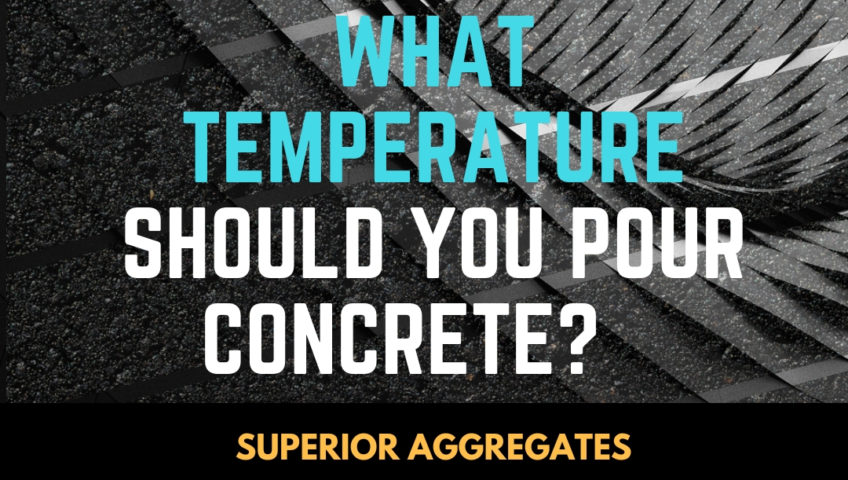
What Temperature Should You Pour Concrete?
Concrete can be poured at any time when the temperatures have been above 40 F for over 72 hours. Moderate temperatures make the placement crew’s job easier as it sets up at a good pace, allowing ample time for edging, jointing, troweling and curing. In some instances, it can be placed when temperatures are lower but special additives are used, and heating may also be required. The other factors that can affect concrete pouring include wind speed, humidity levels, and the temperature of the sub-base which is the surface you will be pouring your concrete on.
Pouring your concrete in cold weather
In regards to concrete, cold weather is anything below 40ºF. Here are some tips for pouring concrete in cold weather;
- Should the sub-base be frozen thaw it with heaters. Alternatively, you could pour the concrete on Styrofoam material as it helps sustain the temperature in the concrete.
- Order for concrete products that are designed to cure promptly. Cold weather concrete is capable of resisting thawing and freezing effects as they have air entrained voids.
- Ascertain that the concrete you order for has a low slump also known as a drier mix to minimize bleed water. You can use a vacuum or squeegees to rid the concrete of bleed water. This will help decrease the setting time.
- You could use hot water to mix the concrete or use extra cement, that is, 100 lbs per cubic yard of concrete to create a heated reaction.
- Once you have successfully poured your concrete, maintain its temperatures at 50ºF for a minimum of 3 days to a maximum of 7 days. This can be achieved through the use of heated enclosures or an insulating blanket.
- If you are going to make use of a heated enclosure, ascertain that it is weatherproof and windproof.
- Once you determine that the concrete is well set, you can remove the insulating blanket or the heated enclosure to allow the concrete to air dry.
Pouring your concrete in hot weather
- Hot temperature in regards to concrete pouring is anything above 77ºF. Here are some tips for pouring concrete in hot weather;
- Avoid pouring the concrete when it’s too hot to avoid temperature-related issues. You can do so either early in the morning or late in the evening.
- You can erect shades along with wind barriers to protect the poured concrete from crusting or stiffening. Crusted concrete is highly susceptible to plastic shrinkage, crazing, and cracking.
- Have a few people help you with the mixing process. Prolonged mixing only results in increased temperatures. You can add ice to the water mix to cool the temperature of the mixture.
- You can dampen the sub-base to help minimize its temperature before pouring your concrete.
- You can control the evaporation after pouring through the use of wet burlap, polyethylene sheets, waterproof paper, and windbreaks.
- Should the weather be extremely hot, you will need to observe continuous moist curing for the next couple of days until the concrete is dry.
Finally, note that it is not advisable to place concrete when temperatures exceed 100 F, as it can flash set and there won’t be enough time for proper finishing.
Comments for this post are closed.
